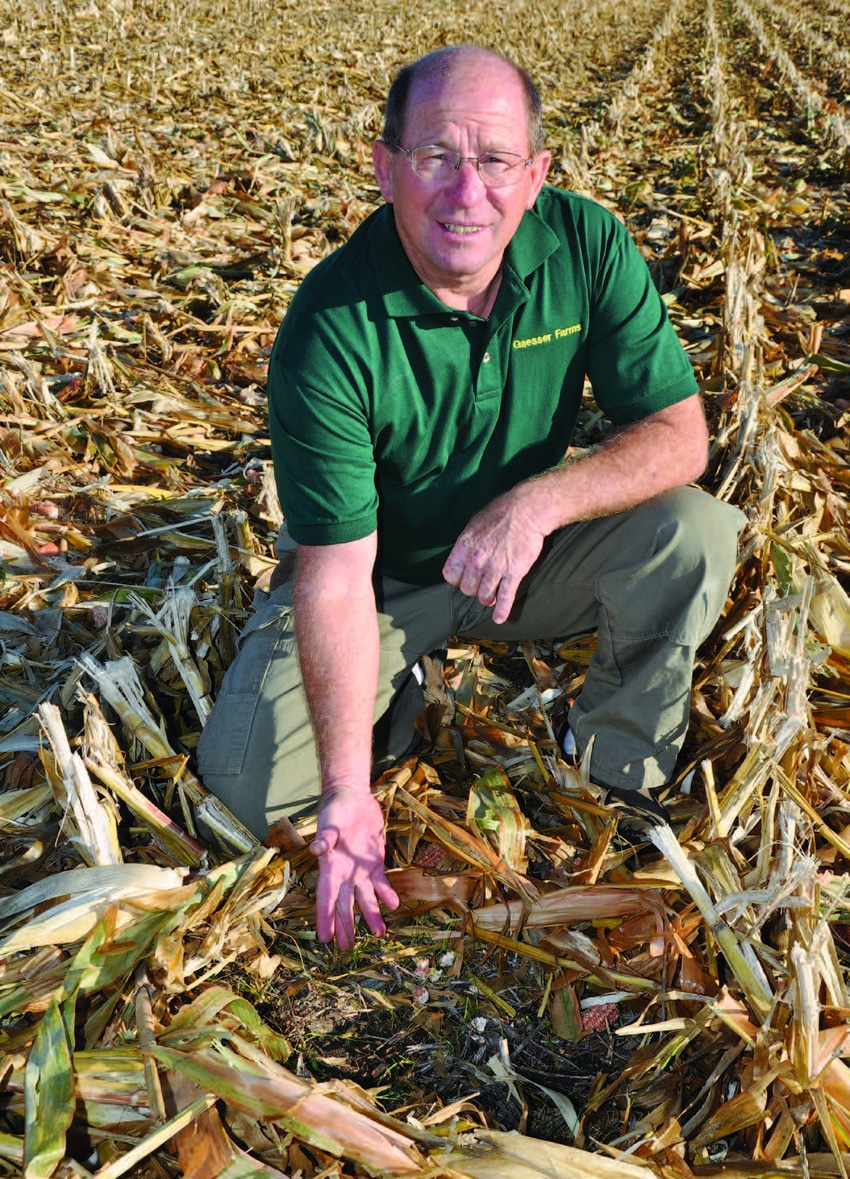
Think different“Up until 3 or 4 years ago, no-till worked for us,” says Ray Gaesser, Corning, Iowa, and ASA incoming president. “In the past four years, we’ve had three 4-inch rain events in 1 hour. No-till, terraces and waterways can’t handle that. I believe we are in a cycle of extreme weather that we have to prepare for.”
December 16, 2013

After more than 30 years of no-till, constructing 1,000 terraces and untold grass waterways and turn areas, Ray Gaesser decided to up his soil-protection game in 2011 after an 8-inch overnight rainfall washed out a 20-acre field that spring.
In many ways, the field was Gaesser’s worst nightmare – a rare field in a no-till operation that had been field cultivated to level out the newly tiled field.
The rain started with a 4.25-inch gusher that fell in 1 hour, 10 minutes. Overnight rainfall ranged from 8 to 10 inches.
“It was bad,” says Gaesser, incoming president of the American Soybean Association, who farms near Corning, Iowa, about 70 miles southwest of Des Moines. “It was worse than a one in 500-year event.”
The field, with some 6% slopes, was left with ruts down to the 4-inch tillage depth. Though soil conservation officials had approved the tillage, “it still was an embarrassment,” recalls Gaesser, who farms with his wife Elaine and son Chris.
Weather extreme plans
The sting of the field washout still smarting, Gaesser worked with NRCS on a remediation program. It included grass waterways, a no-till planting system rotating between corn and soybeans, plus a fall-planted cover crop for extra fall, winter and spring soil protection.
The Gaessers also took a hard look at whether their no-till system was up to the task of protecting soil on the most erosive acres across the family’s entire 6,600-acre operation – and decided it wasn’t.
“Up until 3 or 4 years ago, no-till worked for us,” he says. “In the past 4 years, we’ve had three 4-inch rain events in 1 hour. No-till, terraces and waterways can’t handle that. I believe we are in a cycle of extreme weather. These extremes are what we have to prepare for.”
Cover crop solution
Gaesser has upped his initial 20-acre cover crop ante to about 1,000 acres, with more possibly ahead. Winter cereal rye is the main cover crop, with annual ryegrass added to the mix on some fields.
“I like annual ryegrass because of the root growth, but it didn’t overwinter for us last year,” he says. “I see some advantages to cereal rye because it gets a good start in cold temperatures, so we have good growth in the fall and quick growth in the spring for good cover.”
On fields to be planted to corn, Gaesser allows the rye to grow to 6 to 8 inches before terminating it about two weeks before planting. On soy ground, rye is terminated at about 12 to 16 inches before drilling the crop.
To give cover crops the best shot, the Gaessers have added a second 42-foot drill for a quick planting following harvest. The second drill also compresses spring planting season to cope with increasingly variable weather. “We used to think we had to plant corn in six days and beans in eight days,” says Gaesser. “Now we want to be able to plant corn in four 20-hour days and beans in another four 20-hour days.”
Long-term, Gaesser expects to plant cover crops on more acres. “We’re focusing on the 15% of most highly erodible land as a test area,” he says. “But I anticipate we will have cover crops on everything in the next five years. But at a $35/acre cost, it will have to show a value to justify itself on all our acres.”
About the Author(s)
You May Also Like





